This post is part of a larger deep dive
Curious about the role of Buddhism and Nietzsche’s Eternal Recurrence idea in Cloud Atlas? Check out Cloud Atlas Explained!
Or read the full Cloud Atlas article!
This post is part of a larger deep dive
Curious about the role of Buddhism and Nietzsche’s Eternal Recurrence idea in Cloud Atlas? Check out Cloud Atlas Explained!
Or read the full Cloud Atlas article!
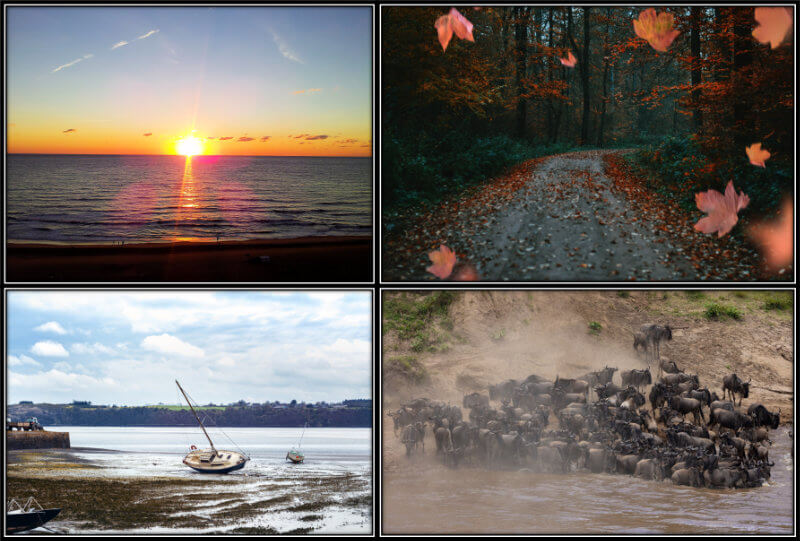
Reincarnation is the idea that when we die, something living inside of us carries on living in another body. Whether that something is an ethereal soul, a consciousness, or a memory, largely depends on what school of thought or religion you lean towards.
The belief in reincarnation (also known as rebirth, transmigration or metempsychosis) likely arose from the observation that everything in the natural world is cyclical. Phenomena such as the sunrise/sunset, the yearly seasons, tides, the growth and fall of tree leaves all obey to a cyclical pattern that repeats without fail.
So, our ancestors eventually looked at these cyclical patterns and wondered if human life might be just as cyclical. As societies formed, the belief in reincarnation took different shapes depending on geography, culture, and current knowledge.
Below, I’ll briefly explain how reincarnation, or more precisely, rebirth, is understood under one fascinating religion: Buddhism.

Rebirth forms a central tenet in the Buddhist religion. At the time of death, our sense consciousness (what enables us to see, hear, smell, taste, feel and think) gradually dissolves into a subtler, mental consciousness, eventually splitting from the body after we take our last breath.
This subtle mental consciousness is what Buddhists usually mean when they speak of the mind being transferred to another body. In fact, Buddhists prefer the term mindstream (as opposed to mind), to emphasise that it is our subtle mental consciousness that is eternal, and what gets passed on to other bodies after death.
The mindstream can take over a new body shortly after death, or it can remain in an intermediate stage that can last up to 49 days. In either case, the mindstream will eventually attach itself to a new body.
Once the mindstream inhabits a new body, the sense consciousness will start to develop, allowing the person (or animal) to see, hear, taste, etc. In this sense, it is the mindstream that powers life.
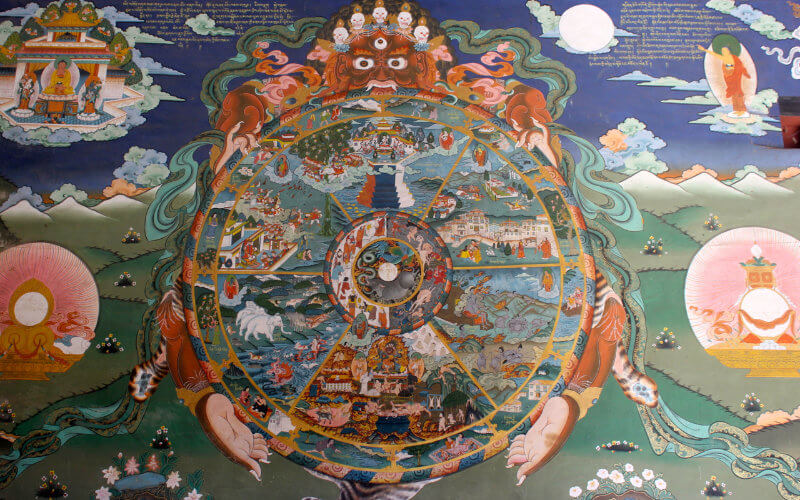
Only sentient beings that are capable of consciousness can be reborn, and they will do so in one of six different realms.
If rebirth takes place in the three lower realms – hell, hungry ghosts and animals – the new life will mostly be one of suffering. In contrast, rebirth in one of three “higher” realms – humans, demi-gods or gods – the new life will be more pleasant and favourable.
This process of dying and rebirth in one of the six realms is cyclical and eternal (also called samsāra), unless one attains liberation (aka, nirvana; more on that below). Thus, our mind might be reborn in the animal realm at one time, but in the next life we might be reborn as a human (or vice versa).
This begs the question: what determines in which realm an individual is going to be born in?
The answer is straightfoward: karma!

In short, karma means actions, as in:
– physical actions (e.g., doing exercise, playing the lottery, hugging your friend, stealing, etc)
– verbal actions (e.g., verbal abuse, love proposal)
– mental actions (e.g., feeling envious, having remorse, wishing someone well).
It turns out that every action we do in our lives leaves a trace, or imprint, on our mindstream. Thus, our mindstream is the place that accumulates imprints during our lifetime.
Because the mindstream is dependent upon our past behaviour (i.e., on our actions, or karma), it is never static, but always changing. This is why Buddhists don’t adhere to the idea of a fixed soul.

In Buddhism, you cannot choose which actions are imprinted in your mindstream. Every action you do will leave a trace on your mindstream. Nevertheless, not every action will weigh the same when deciding in which realm you will be born into.
It is, therefore, to your own advantage to act virtuously and good, since you will be rewarded with a happy rebirth. Act non-virtuously and your next life will be less generous.
Suppose, you aren’t a clingy person, not too attached to material possessions. You might not even have much money, but you are always keen on helping others with whatever little means you have. Such actions would be imprinted as good karma, such that in your next life, you would be rewarded by re-borning into someone that is well off (provided that this action isn’t offset by other bad actions).
Now imagine that in this new wealthy life of yours, you become a greedy person. You overspend money on luxurious objects and look at more modest and austere lifestyles with disdain. You might even engage in criminal activities if that brings you even more wealth and reputation. Such actions would be imprinted as bad karma, such that in your next rebirth, you might be born in a “lower” realm.
The idea that animals can be reborn as humans (or vice-versa) might sound strange. After all, how can animals accumulate the good karma required to ensure a happy rebirth?
However, in some traditional texts, it is mentioned that Buddha took birth as different kinds of animal throughout his samsara (the cyclical death and rebirth).
One way he succeeded in being born back as a human was to perform good deeds as an animal.
For example, in one case (not uncommon in the animal world), he (as an animal) sacrificed himself to save another animal. In other cases (somewhat less believable in nature), he might have given up his life in order to save a starving beggar.
One of the hardest ideas to grasp in Buddhism is the idea that our mindstreams are eternal. According to Buddhism, there is no beginning the cycle of birth and rebirth, samsara had no start line, it has existed forever.
It’s easy to imagine our sense consciousness with our conception of time. You just need to go back in time and realise that the state of our current mind depended on the state of our mind yesterday; and that the state of our mind yesterday depended on the state of our mind the day-before-yesterday, and so on and so forth (see figure above).
Indeed, you could perform this exercise until you reach the moment of conception, when the egg and sperm from your parents created you.
In fact, why stop there, you could theoretically go back to all the previous bodies that your mindstream inhabited up to the first human being.

But now, there is a problem.
What if you go back to a time before humans beings even existed? Where does the mindstream come from?
Well, one way out would be to argue that the mindstream was passed on from earlier hominids (such as Australopithecus), or even from animals that inhabited early Earth (see figure above).
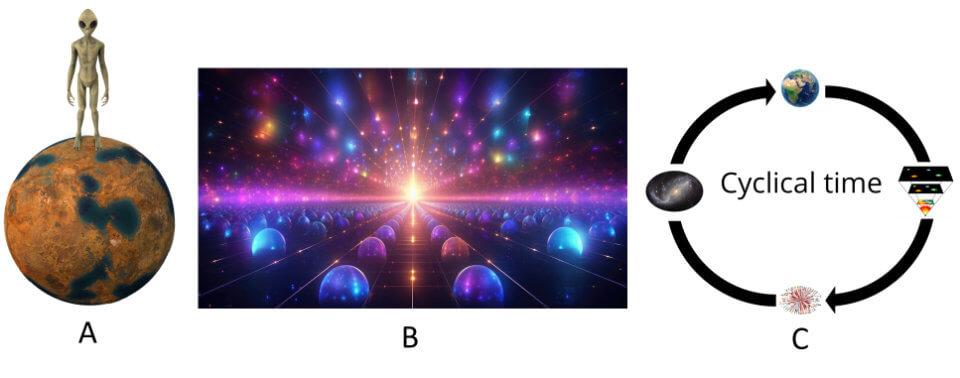
But you keep pressing and ask, “OK, but what kind of hosts did the mindstream possess before any sentient animals were roaming Earth?”. And that would be a very good question!
At this point, it is important to remember that in Buddhism life exists beyond our planet. Mindstreams that populated beings from other planets could potentially be transferred to earthlings (figure A above).
Even the Big Bang is not a hurdle. Buddhists believe that our universe is simply one of many generations of universes that regress to infinity (figure B above). One could even bring up the Eternal Recurrence idea I mention below, and argue that our existence is itself cyclical (figure C above).
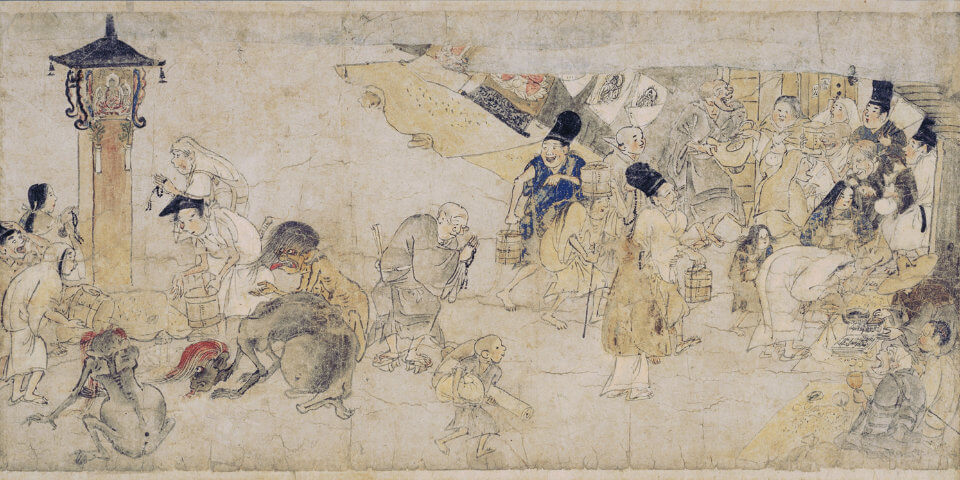
And, remember, there are also other realms beyond the reality we know of. There’s the hell, demi-god and god realms, places we cannot directly access with our limited senses, but in which our mindstreams can also linger.
The take-home message is that you shouldn’t view the mindstream as something especially human or “made” for humans. A mindstream, as I understand it, is immaterial and thus independent of the type of body it inhabits. It simply contains the actions (karma) that will determine the type of life you will have next.
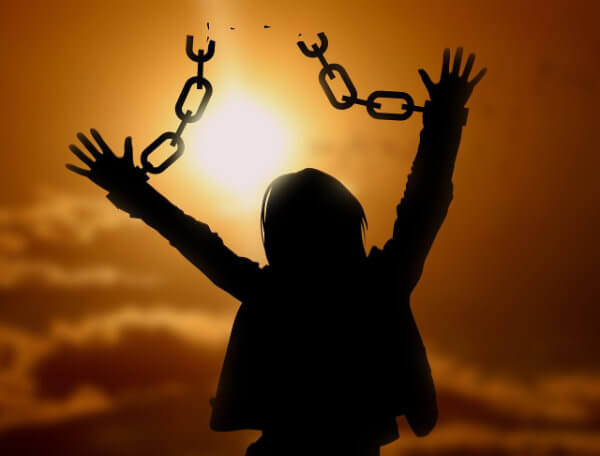
The cyclical process of birth and rebirth is termed samsara, and in Buddhism, it’s an annoyance because there can never be true peace and freeing of the mind.
For that reason, the Buddhists believe that it should be everyone’s goal to free ourselves from the samsara to end this cycle of suffering.
You might disagree. Why would the end of samsara be a good thing? Your life is great, you haven’t done much wrong in the world, so let’s keep the samsara going, shall we?
However, this is the kind of thinking Buddhists believe is flawed and delusional.

First of all, you cannot control what kind of rebirth you will have next life. It’s true that good actions encourage happier rebirths, but, remember, every action counts. We aren’t perfect, and surely there is a dark side of us that will eventually come back and bite us on the arse.
Second, even if you are reborn into a happy life, there is always a risk you’ll become greedy, selfish, and corrupt. If so, your next life could be one of misery and pain.
Third, even though living as a human is considered to have been a happy rebirth (i.e., a higher realm), even happy moments have a precarious existence. Impermenance – that is, the idea that evertything is changing and that nothing is permanent – is a feature in our lives. We will all eventually be confronted with disappointments, heartbreaks, illnesses and death.
Finally, don’t you feel that even when you have something good going on with your life, you are always craving for more. What we have is never good enough. We constantly seek more wealth, reputation, love… The lack of fulfillment everyone experiences in their lives is exactly why Buddhists believe it is important to break the cycle.
The question is… how?
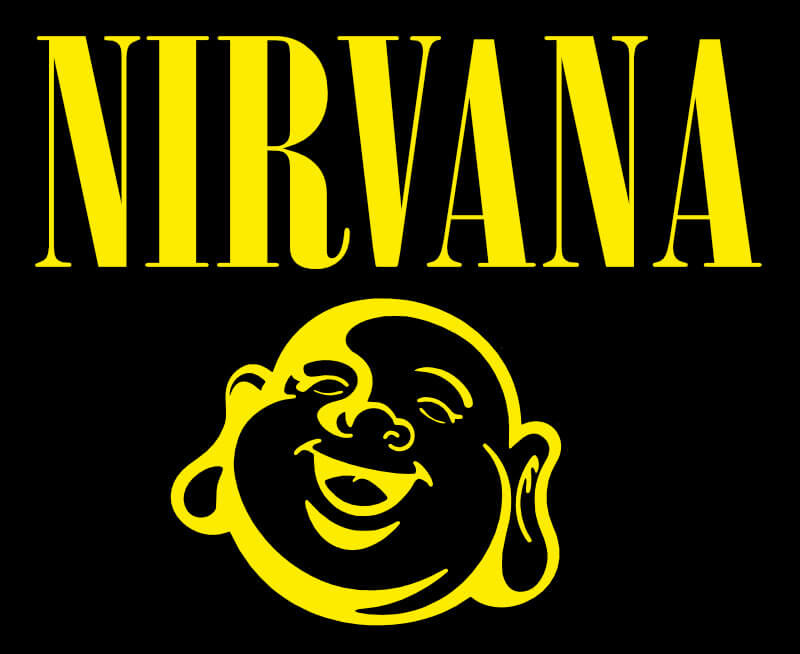
There can only be one way to end the cycle of death and rebirth, and that is if we attain nirvana.
Nirvana (aka, enlightenment or awakening) is simply the idea that we have achieved total peace and tranquility of mind – we have become Buddhas (by the way, in Sanskrit, Buddhá, बुद्ध, simply means “awake” or “enlightened”). When nirvana is attained there’s no more rebirth, no more suffering.
We need to appreciate that nothing is permanent, not even our identity, so there is little point becoming too attached to material possessions or even to people.
To realise nirvana is, thus, to understand that we are all, to some extent, motivated by greed, hatred and delusion. We need to destruct these “poisons” and cultivate positive attitudes such as generosity, compassion, equanimity and wisdom.
Most of the work entails introspection, that is, examining whether our actions and thoughts could potentially be harmful to us or to others. By carefully following a set of guidelines known as the eightfold path (see figure above), as well as promoting ethical behaviour, we should be on a good way towards Nirvana.
Once we achieve Nirvana the endless cycle of rebirth and death is terminated.
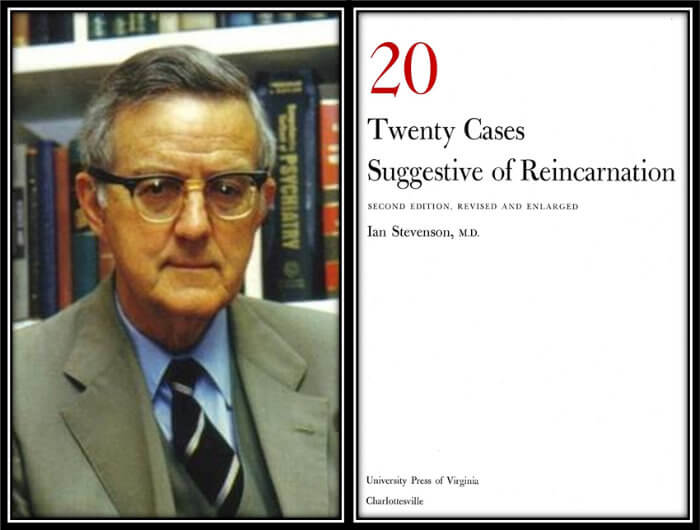
University of Virginia’s late Professor Ian Stevenson devoted most of his career researching reincarnation. Even though his first book on the subject – “Twenty Cases Suggestive of Reincarnation” – was received with skepticism from most of the scientific community, it remains the first true attempt at empirically investigating reincarnation.
Stevenson’s methods relied mostly on interviews with the alleged incarnates (i.e. the people claiming to be a reincarnation of a deceased individual) and/or first-hand witnesses, as well as studying any written documents available about the case. As soon as Stevenson got informed of a potential case, he (or some collaborator) would travel to the place where the reincarnated personality lived and conduct the interviews himself.
In most cases, Stevenson would only hear about the case several years after the initial reincarnation claim had been made. However, in some specific cases (e.g., Imad Elwaar), Stevenson managed to arrive at the location before anyone had tried to verify the memories of the alleged incarnate. Presumably, this avoided potentially influencing the child with information he/she could have heard from other people, and allowed Stevenson to directly observe the meeting between the family of the deceased individual and the allegedly reincarnated personality.
Stevenson would meticulously interview and record the memories of the child and first-hand witnesses. Next, he would also interview and record the memories of the family of the past life. Finally, he would check both the congruencies and incongruencies in the reports, in order to make a final verdict whether the case was suggestive of reincarnation.
One aspect that was crucial in deciding the merit of the reincarnation claim was the presence of birthmarks in some of the alleged incarnates.

According to Stevenson, one of the most convincing evidence of past lives comes from birthmarks and birth defects on the alleged incarnates.
For most of the cases, Stevenson either could not verify the wounds of the alleged past lives, or had to rely on the informants’ memories of potential wounds on the deceased individuals. However, in a small number of cases, Stevenson accessed the actual medical records of the deceased individuals, and, thus, could compare the wounds with the birthmarks of the alleged reincarnated personalities.
For example, Metin Köybaşi claimed to be the reincarnation of a relative who had died from a bullet wound to the head. The bullet had entered the left side of the head and stopped close to the right side of the neck. The pathologist then extracted the bullet via a small incision on the neck. Metin, the alleged incarnate, had been born with areas of increased pigmentation on either side of his neck, around the same areas as the wound of entry and incision performed by the pathologist.
In another case, Tali Sowaid had memories of a man that was shot close range, with the bullet entering one side of the face and exiting on the other. Stevenson noticed two birthmarks on each side of Tali’s cheeks. Stevenson was also aware that entry bullet wounds are usually smaller and rounder than exit bullet wounds, and the birthmarks of Tali seemed to correspond to that fact.
Walter Wilson accidentally shot a shotgun bullet, which came through his left hand and exited his wrist. The man died after surgery at the hospital. Alan Gamble, a near relative of Walter Wilson, was born with two birthmarks on his left hand and wrist.
In yet another case, Sunita Singh had been born with a large birthmark of the port-wine stain type which extended from upper right chest to the right arm, and additional birthmarks on the neck and chest. Later she claimed to be the reincarnation of a woman called Ram Dulari, who had been killed by a sword. The postmortem report of Ram Dulari showed that the wounds on her neck and chest corresponded closely to the location of Sunita’s birthmarks. Because Ram Dulari had not been washed before the cremation, Stevenson speculated that the port-wine stain birthmarks corresponded to the blood left on Ram Dulari’s body.
Nasruddin Shah claimed to have memories of a man Hardev Baksh Singh who, during a quarrel over cattle, was killed with a spear through his left upper chest. The postmortem report indicated that the spear wound in Harvev was located near Nasruddin’s left chest birthmark.
Narong Yensiri spoke of his grandfather, who died under mysterious circumstances. Upon examination of the medical report, Stevenson noticed several wounds on the deacesed body in places corresponding to the locations of several birthmarks in Narong’s body.
Necip Ünlütaşkiran claimed to be the reincarnation of a man called Necip Budak, who got stabbed repeatedly in the chest after a quarrel. Many of Necip Ünlütaşkiran’s birthmarks matched the stab wounds on Necip Budak’s body.
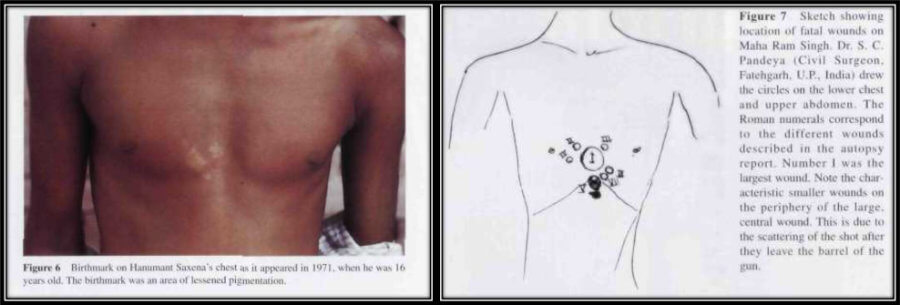
Hanumant Saxena had memories of a man Maha Ram, who was fatally shot at close range with a shotgun. The doctor that examined the body of Maha showed Stevenson his own sketches of Maha’s wounds (right figure above), and the correspondence between the location of the wounds and Hanumant’s birthmarks (left figure above) was very high.
Sunita Khandelwal was born in Laxmangarh, India, with a large birthmark on the right side of her head. She claimed to be the reincarnation of an unnamed 8-year old girl living in Kota, a city 350 km away from Laxmangarh. She mentioned that her cousin in the previous life had pushed her down. When she and her parents visited Kota, they got to know a man who had an eight-year-old daughter, who died of a head wound after her cousin accidentally pushed her down a balcony. Stevenson looked at the medical records who identified the cause of death as likely from a fracture of the base of the skull, causing hemorrhage and swelling of the brain.
Why are most memories always about gruesome deaths like point-blank shots and trauma? Stevenson speculated that the reason is that these deaths are so violent that they are retained memory for whoever reincarnates.
Leave a comment
Add Your Recommendations
Popular Tags